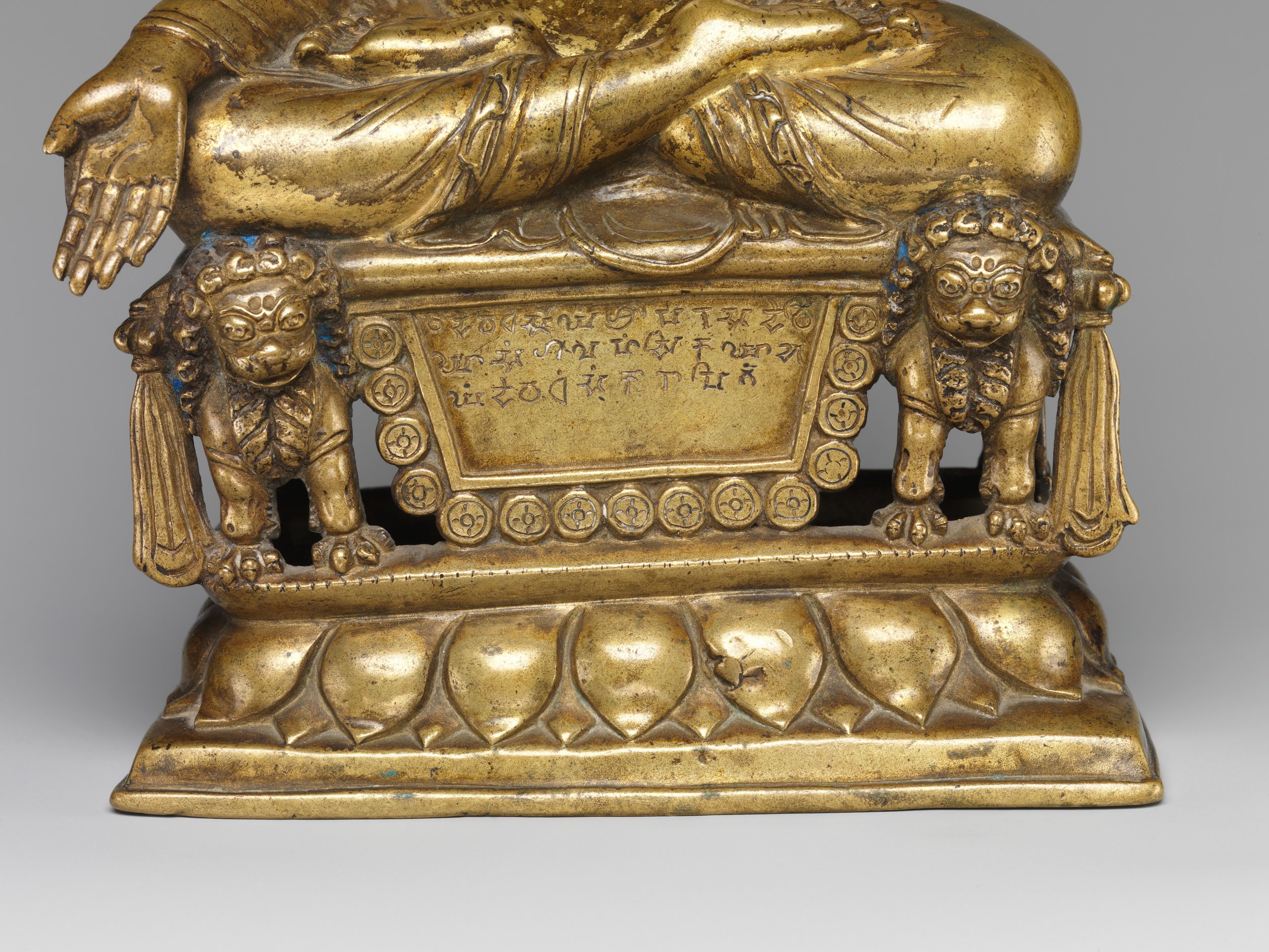The Patola Shahis of Gilgit
The enchanting region of Gilgit was at one time ruled by the powerful Patola Shahi Dynasty between the 6th and the 8th Century. It was a great.l Asia through North Indian Plains and Kashmir. It was at this time that great statues of the Buddha were carved out on rock faces all over the Region. One of the most important historical find relating to Buddhism was also found in Gilgit, named after it as the Gilgit Manuscript which today lies partly in the National Archives in New Delhi as well as partly at the SPS Museum in Srinagar. Such was the importance of this manuscript that Pandit Jawaharlal Nehru had in 1947 despatched a special Plane to Kashmir to get the Gilgit Manuscript to Delhi for safety.
The Patola Shahis find mention in the later parts of the Gilgit Manuscripts as well as on certain Bronzes of that period found in the Region. They are also known from the Hatun inscription in the Ishkoman Valley and from an inscription at Hodor. The Gilgit Manuscript mentions a certain Patola Deva Shahi Vajradityanandi.
Gilgit is the name given to the western frontier districts of the erstwhile state of Jammu and Kashmir which are now under the occupation of Pakistan alongwith the more central Baltistan. It corresponds to the region called Dardistan. Its subdivisions are Astor, Bunji, Chilas, Gilgit, Hunza, Nagar, Punial, Yasin and Chitral. Adjacent to it is the territory of Baltistan consisting of the subdivisions of Kharmang, Kaplu, Shigar ·Skardu and Rondu'. More strictly Gilgit signifies the lower valleys of the Gi]git river joining the Indus at its acute bend north of Nanga Parbat. This whole area is extremely mountainous exceeding 20,000 feet on the north and west, but the lower valley is about 5"000 feet and grows maize, millet, temperate cereals and even some cotton and rice.
The people of Gilgit were Dardic as opposed to the Baltis of Baltistan who were of the Tibetan stock with Dardic admixture. Their language is Shina as opposed to the Tibetan derived Balti of the Baltis. Interestingly in the region of Gurez and Drass there still exist Shina speaking communities which had originally come down from Gilgit. It is pertinent to note that Gurez was an important pit stop on the road that linked Kashmir with Gilgit across the Burzil Pass.
Along river valleys and mountain passes run routes connecting this region with the outside world. One route passing through the Tragbal and Burzil passes joins Gilgit to Srinagar 223 miles south of it 3. Another route connects Gilgit with the Abbottabad frontier of the Punjab along the Bahusar Pass. In the north, narrow sterile mountain valleys, measuring some 100 to 15"0 miles in width, separate the province from the Chinese frontier beyond the Muztagh and Karakoram ranges.
The region of Gilgit and Baltistan is known as Daradadesa in old texts like the Rajatarangini. Its people, the Daradas, are said to have played an important part in the history of Kashmir. According to the Tibetan historian Taranatha, the route between it and Kashmir was opened by Buddhist pilgrims and missionaries who reached Kashmir with and following Madhyantika the emissary of Moggaliputta Tissa at the time of Asoka. The ancient name of Gilgit under its Hindu Rajas was Sargin, which was later known as Gilit.
The Patola Shahis unlike the Kabul Shahis were great proponents of Buddhism and it was under their patronage that Buddhism flourished in the region was spread towards Central Asia and Tibet. Even to this day the number of Buddhist sites discovered in Gilgit alongwith the various rock carvings the Himalayan regions which are no longer Buddhist are a testimony to this fact. Stretching across from the Hindu Kush from the Bamiyan region where the giant Buddhas were made all the way into the Trans Himalayas and the Karakorams were numerous Monasteries dedicated to Buddhism. It was from these Monasteries that the present form of Tibetan Buddhism evolved and is still prevalent from Ladakh to Tibet and all the way to Yunnan.
But little is actually known about the Patola Shahis except that they left as a legacy great pieces of art such as this Buddha inscribed with an ancient form of Sanskrit. Its presently in the Met Art Museum in New York and the Museum website describes it as such
Enthroned Buddha Granting Boons : Date to ca. 600. Gilt brass with silver and copper inlay. It also mentions this (sic) : This Buddha is one of the three earliest datable sculptures associated with the kingdom of Gilgit in northern Pakistan. All were commissioned by Queen Mangalahamsika, known from Gilgit manuscripts to have been the senior queen to King Vajraditayanandi (reigned ca. 600). The Sanskrit donor inscription engraved on the front cartouche states: “Om. This is a pious gift. This pious gift was ordered to be made by the Shri Paramadevi [Highest Queen] Mangalahamsika” (trans. O. von Hinueber).
Pics from the Met Art Museum, New York


